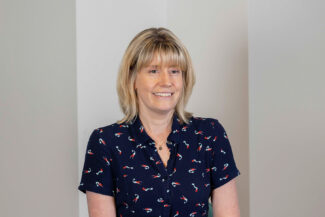Patents Court rules on non-invasive prenatal diagnosis patents
12.01.2018
On 21 November 2017, Mr Justice Henry Carr handed down his judgment in Illumina v Premaitha [2017] EWHC 2930 (Pat). The case involved the consideration of 5 patents, all of which were concerned with non-invasive prenatal diagnosis (“NIPD”). Put simply, this involves a means of testing a foetus for the presence of certain genetic disorders by taking a sample of the mother’s blood. NIPD does not carry any risk to the foetus unlike invasive techniques such as amniocentesis. The Judgment itself (which concerns 3 separate claims and follows a trial lasting around 14 days) is unsurprisingly lengthy and deals with almost all aspects of substantive patent law. This short piece only seeks to deal with the most interesting issues which are dealt with in the first section of the Judgment concerning the patent referred to as LO-1.
The first issue for the Judge was whether LO-1 was invalid for lack of inventive step. The Judge summarised the legal principles relevant to the assessment of inventive step, including a reference to the Court of Appeal Judgment in Actavis v ICOS on obviousness to try. The Judge also made the interesting point that having read a piece of prior art, it is perfectly permissible for the skilled to set it aside as not being a worthwhile starting point. Ultimately, the Judge found that the prior art in this case “propounded an implausible theory” and that the skilled team would have taken the view that it was “fundamentally flawed”. He therefore found LO-1 to be non-obvious.
A further ground upon which LO-1 was challenged was entitlement to priority / lack of enablement. Setting the scene, the Judge noted that if an “invention discloses a principle capable of general application, the claims may be in correspondingly general terms” and subsequently that “Such a claim is sufficiently enabled if one can reasonably expect the invention to work with anything which falls within the general term”. One argument, which was run as a squeeze between infringement and validity, was that if LO-1 covered one of the alleged infringing methods, since this was not enabled in the priority document, LO-1 was invalid. In response, the patentee argued that LO-1 claimed a principle of general application which could extend to improvements which utilised that principle (such as the alleged infringement) without such improvements having to be enabled. The Judge devoted several paragraphs of the Judgment to this “key issue” in which he summarised the leading English and EPO Board of Appeal authorities. He ultimately held in favour of the patentee, concluding that “fairness to the patentee may require that unforeseeable variants, enabled for the first time by new technology, fall within the scope of protection, although the patentee is less likely to succeed where the variant was unforeseeable at the priority date. A variant which represents an inventive step may nonetheless infringe”. The Judge was of the view that it would not make sense if the patent was found to be insufficient solely because such an inventive variant, which it did not enable, fell within the scope of its claims.
Finally, but perhaps most importantly in the current patent litigation climate, when considering the issue of infringement, the Judge applied the principles set out by the Supreme Court in Actavis v Eli Lilly [2017] UKSC 48. Readers may recall that the first limb of the test adopted by the Supreme Court asks whether the product of process in question falls within any of the claims as a matter of “normal” interpretation. The Judge acknowledged that the use of this word may be confusing but clarified that he considers normal interpretation in this context to mean purposive interpretation (thereby agreeing with Arnold J in Generics v Yeda [2017] EWHC 2629 (Pat)).
The Judgment also contains interesting commentary on discoveries as such, use of the prosecution history and the infringement of process claims where part of the process is carried out overseas. However, these topics are beyond the scope of this summary.

Claire Wilson
Author
